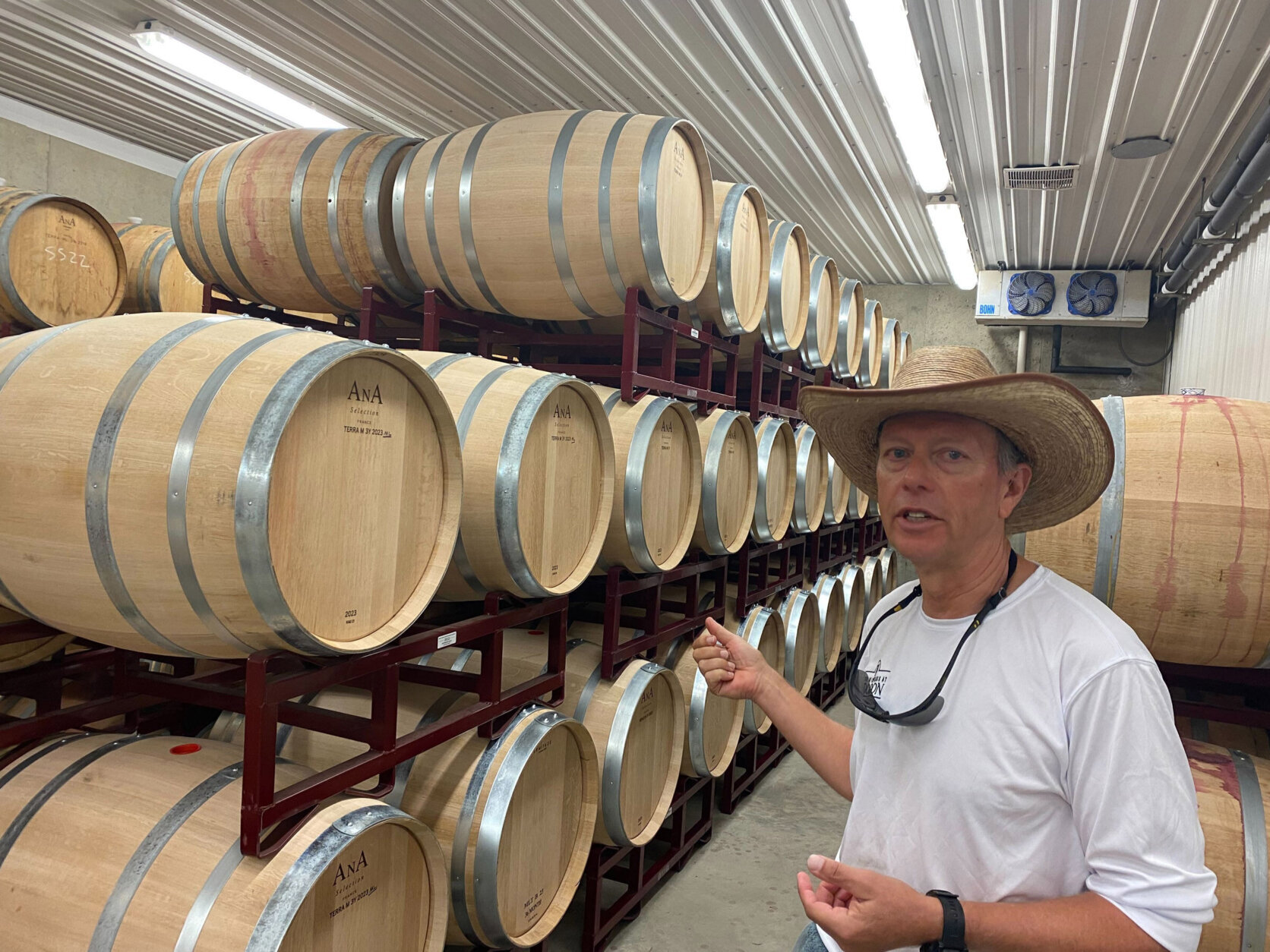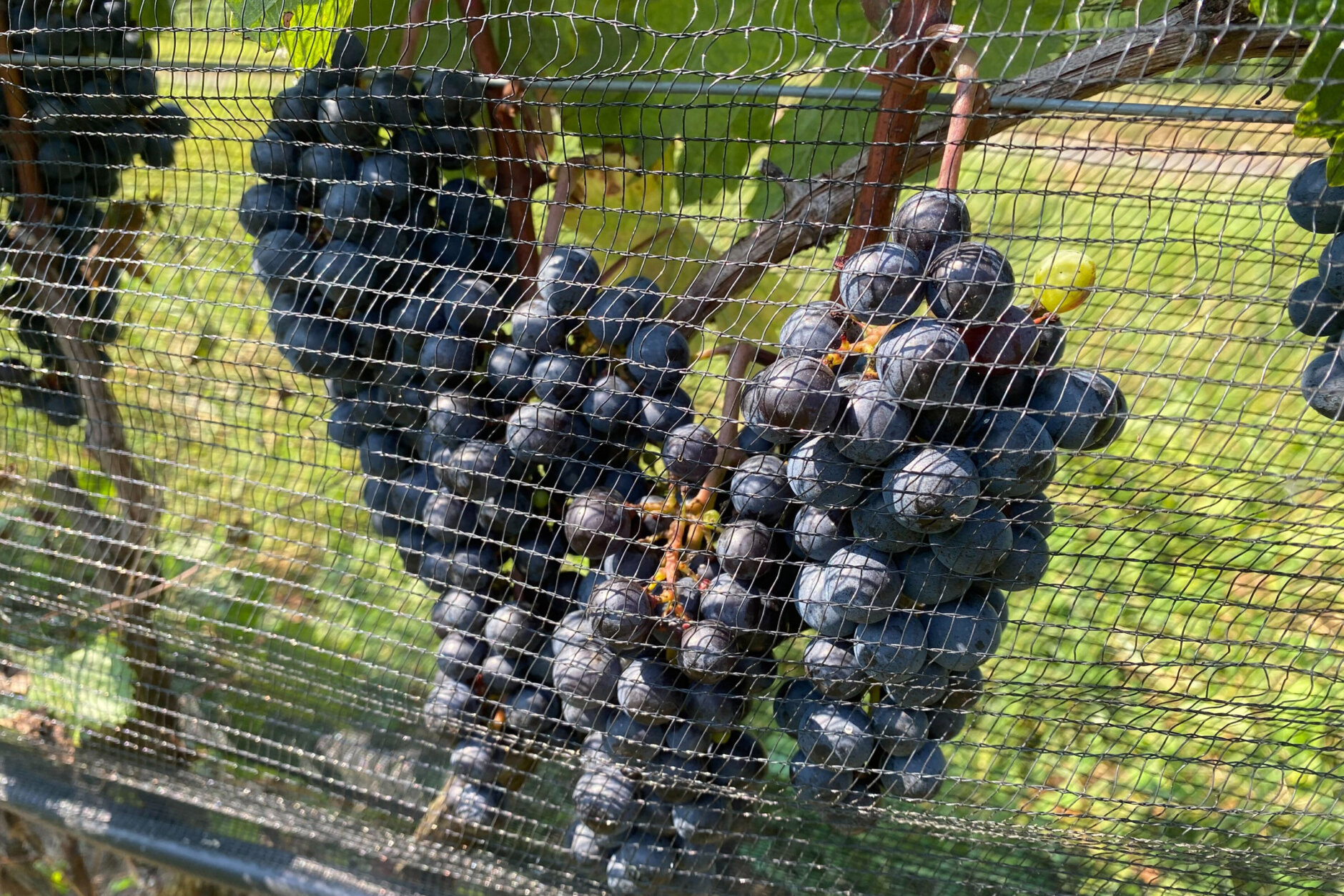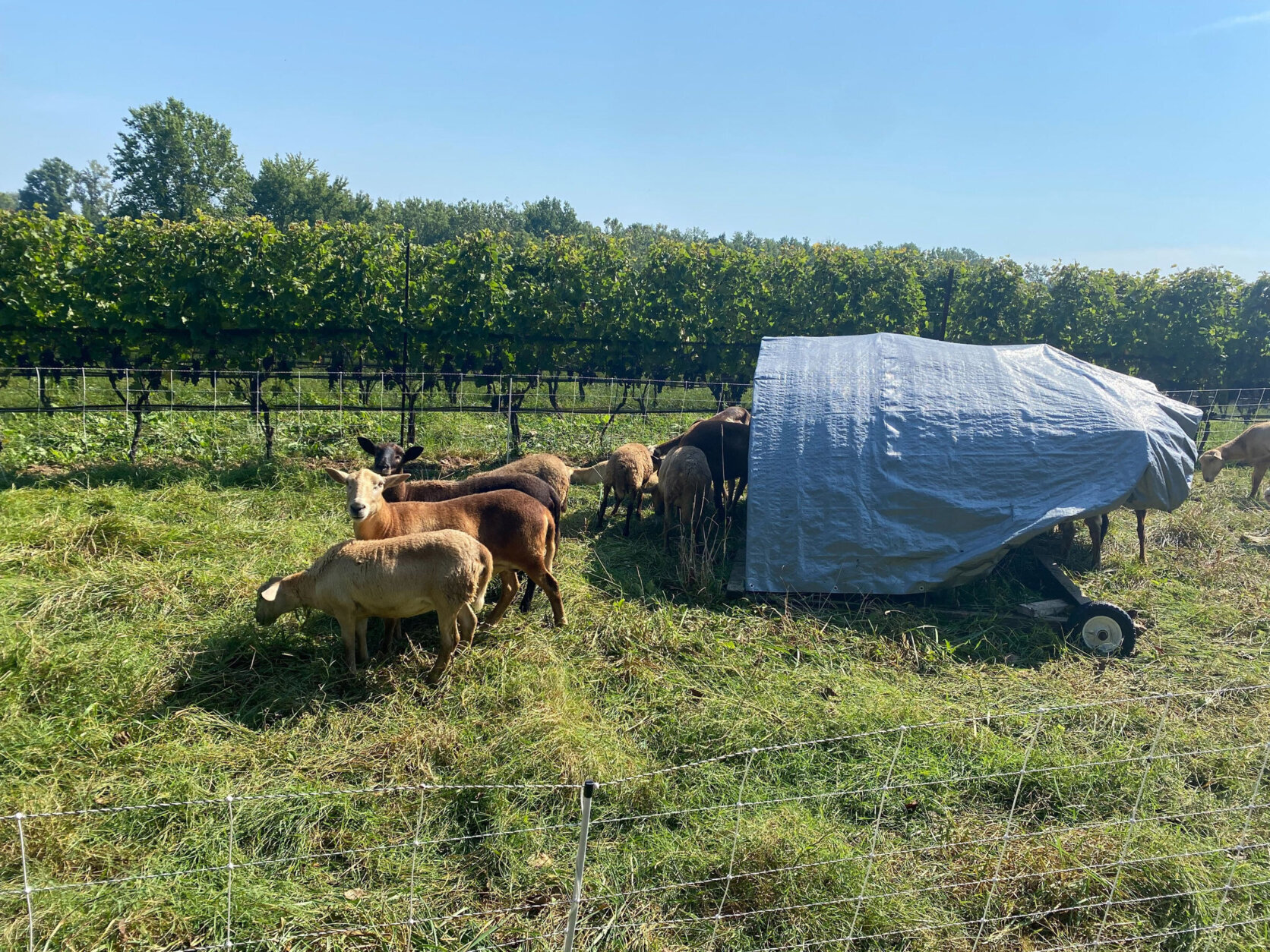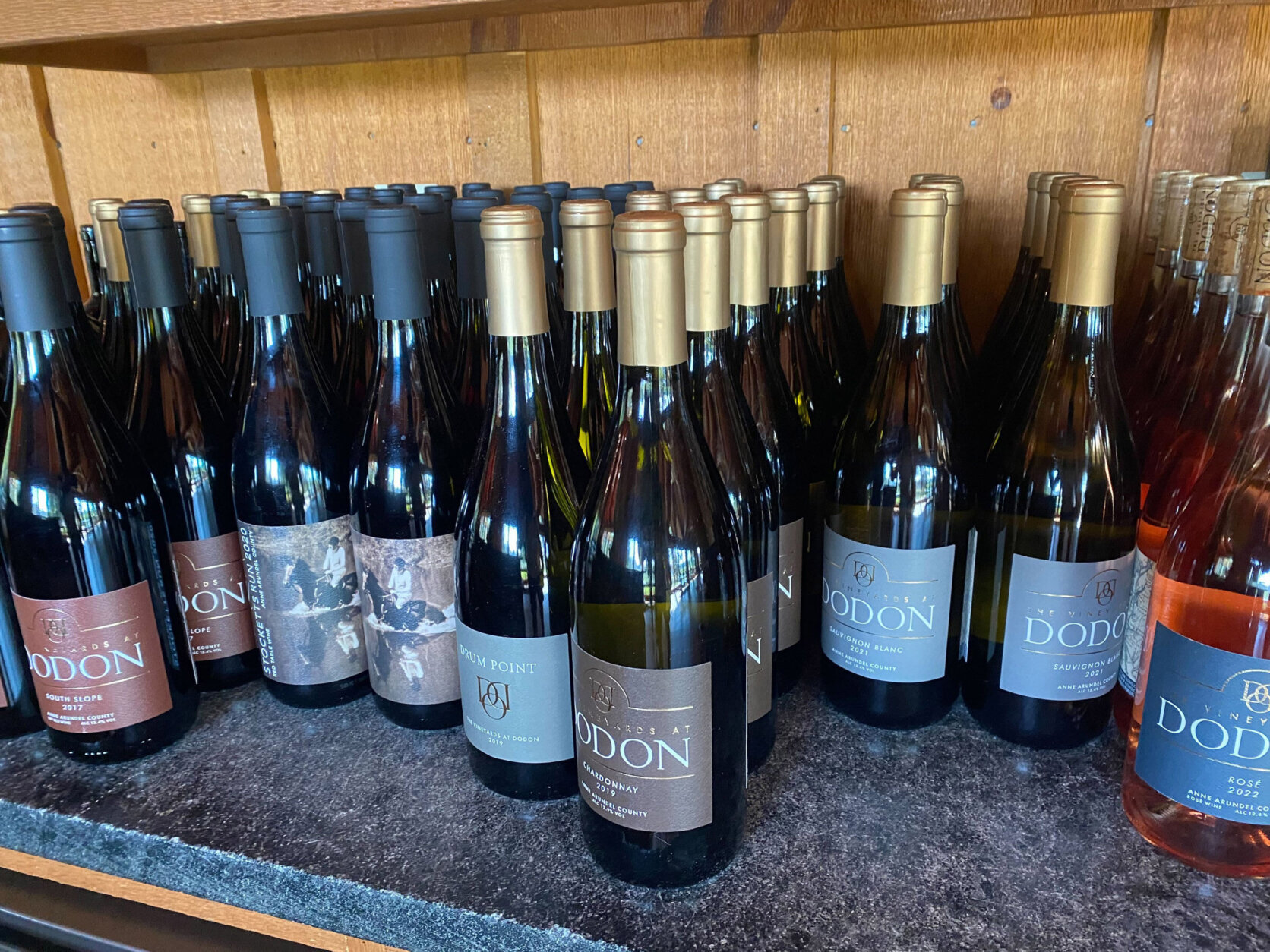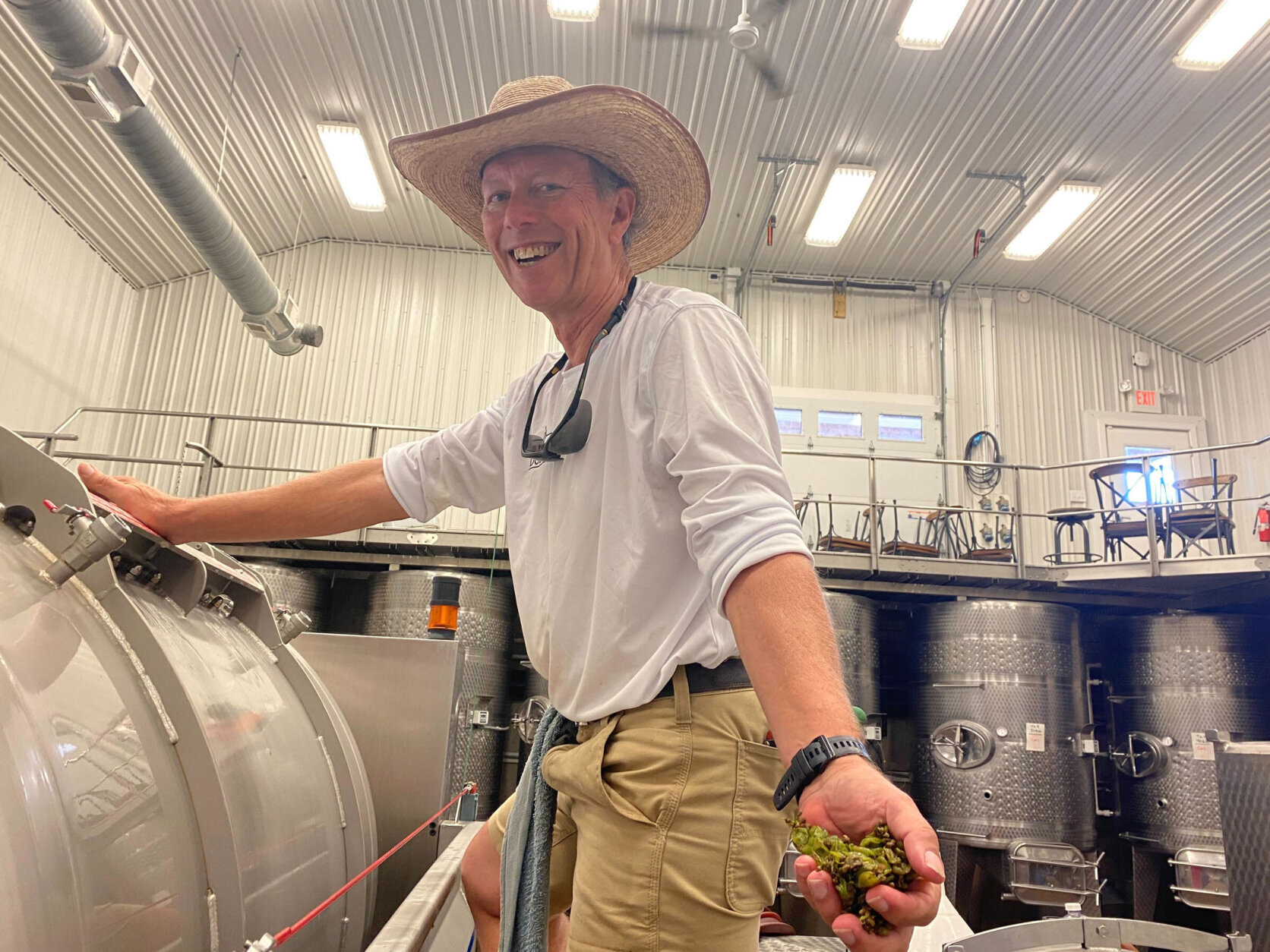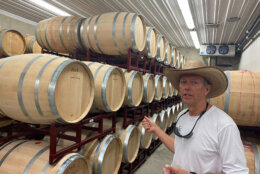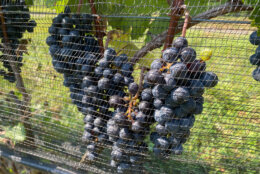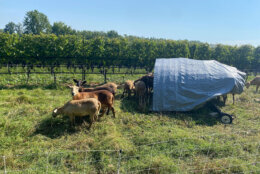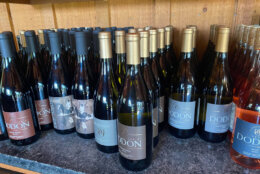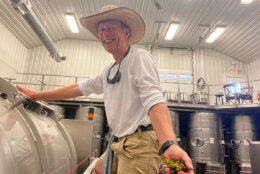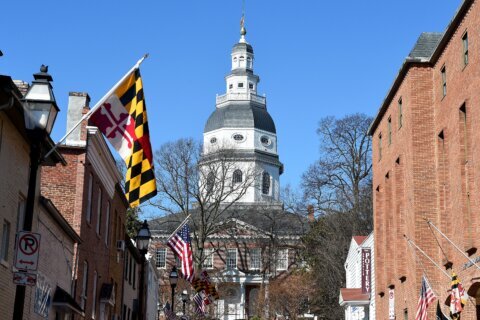The Dodon Vineyards in Davidsonville, Maryland, spans 17 acres of centuries-old farmland. It was founded in the 1700s and for centuries it served as a tobacco plantation, before switching to corn, soybeans and other crops in the 1960s.
Today, there’s row after row of grapes. Some bunches are a deep, dark purple while others are the lighter, greener variety.
Between the driveway that runs to the vineyard and the grapevines themselves, you’ll see a flock of sheep. You’ll hear them too. They aren’t quiet, except when they’re munching on grass — and there is a lot of grass to eat.
In fact, it’s an ecological cycle that uses science to make a better tasting, more sustainable bottle of wine. The sheep eat the grass, and their manure serves as fertilizer and compost.
“What they’re really doing is providing new microbes that decompose that soil. So we get a lot of cycling of nutrients and carbon,” said Tom Croghan, the scientist turned co-owner and winemaker at Dodon. “That life in the soil, that turnover is what’s really important to allow the vines to get the nutrients they need.”
“If you had a bare field out here without the animals and without the diverse cover crops, the only thing that would be out there (would be) things like the grapevines, because that’s what we have” he added.
“But if we have a whole bunch of different grasses, a whole bunch of different wildflowers, a whole bunch of different microbes, and a whole bunch of different insects in the soil above the soil, now there’s a whole lot of functioning ecosystem self-regulating.”
Groghan said centuries of traditional farming on the land at Dodon had zapped most nutrients out of the soil. But now, the natural fertilizer from the sheep and, more importantly, the cover crops which grow under the vines, have rapidly increased the amount of organic matter in the earth.
Now he said there are several species of wild grasses and flowers that grow around Dodon. And, as they flower, they draw in bees and other insects to help balance the ecosystem.
It’s been years since any of those grasses have been mowed. Instead, a special tool is used to flatten down the grasses so they don’t overgrow the vineyards.
The self-sustaining ecosystem at Dodon fills the soil with hundreds of tons of carbon that would otherwise find its way into the atmosphere. That more than balances out the 50 tons of carbon emissions Croghan believes gets emitted by the vineyards, mostly through the use of diesel powered farm equipment and glass bottles for the wine.
The farm relies entirely on solar energy for its electricity.
“We’re net carbon negative by 200 to 250 tons of carbon dioxide every year,” said Croghan. “That translates into a bottle of wine that is seven kilograms net carbon negative for each bottle that we produce.”
On average, a typical bottle of wine from another maker is responsible for 1.29 kilogram of carbon emitted into the atmosphere, according to Wine Enthusiast.
Being carbon negative means to offset more carbon, through sequestration, or avoidance, than you contribute to the atmosphere.
“We are taking every step to ensure that we are doing our part to give back to nature and rebuild soils and restore systems,” said Regina McCarty, the vineyard’s general manager. “Things work better together. Animals and plants are supposed to be together.
“Instead of having a sterile growing environment, we have a lot of diversity down to the microbiological level, which creates resilient systems,” she added.
“One of the things our customers seek here is that they want to feel good about the businesses that they support. And we want to feel good. I want to feel good about what we do for the environment and for our community,” said Croghan.
Most vineyards aren’t taking these steps yet, though the number that are has been growing in recent years.
“The world is in a crisis right now with climate change, with biodiversity loss, with eutrophication, which is the nutrient pollution that we’ve all cared about in the bay for years and years and years,” Croghan added. “We’re in a crisis. Our systems are becoming very unstable.”
So if you needed an excuse for your next glass of wine, this might be it.
“Always in moderation,” Croghan said with a laugh. “It’s the doctor in me. Always in moderation.”

